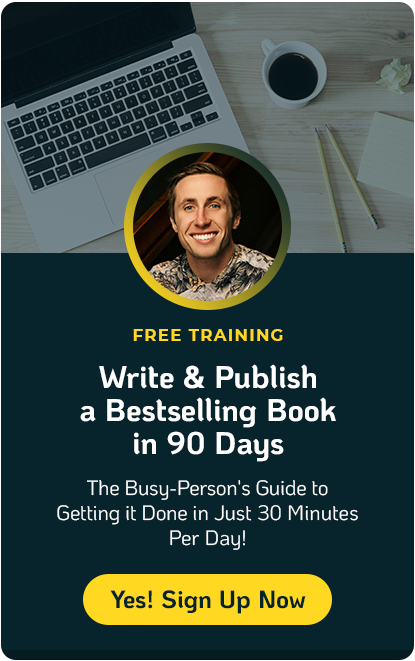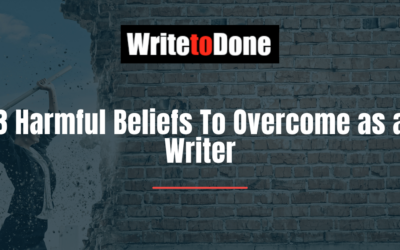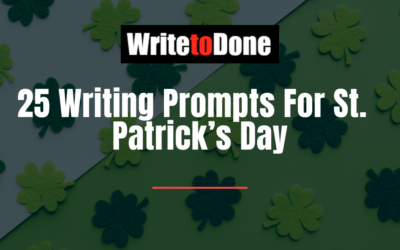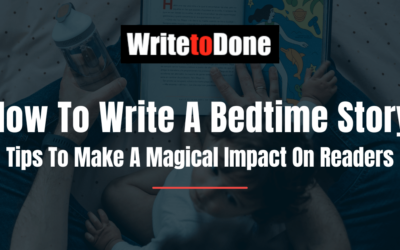Sometimes creativity seems elusive. And if you can’t generate creativity on demand, your writing productivity declines.
There are ways to draw on your creativity at will. In the process, your productivity will skyrocket!
Here are five unusual ways for you to invite creativity to write with you and have your muse accept and show up for work.

1. Develop a Creativity Ritual
Have you ever seen athletes or actors get ready to perform? Many of them have rituals they complete before competing or walking on stage. Maybe they:
- Wear a lucky pair of socks
- Say a prayer
- Spend time listening to the same piece of music over and over again.
- Say specific affirmations
Whatever the ritual, it puts these people in the zone and helps them feel comfortable, confident and inspired to do their work.
Approach writing in a similar manner. Develop a creativity ritual to use before every writing period.
Approach this series of pre-writing actions “religiously.” I don’t mean spiritually (although you can), but as something you commit to regularly and consciously doing to connect with your creativity. Do it religiously.
Think about it: A religious ritual is one performed intentionally on a specific occasion often to create a particular result. You want a ritual to invoke your muse so you can write.
You can create an altar in your office. Every day before you sit down to write, go to your altar, light candles and incense, say a prayer or affirmation, and then sit down at your desk. Start writing.
If that’s a bit too spiritual for you, put on the same sweatshirt, read a motivation book or quotation, dance around your office to uplifting music, or meditate for 10 minutes. Then put your fingers on the keyboard.
Design a creativity ritual that works for you – something that helps you connect with your Muse or tap into the flow of ideas and words. Invoke your Muse! Then watch what happens when she arrives.
2. Start a Side Project
If you want to increase your creativity – and productivity – start a side project.
I can hear you complaining: I don’t have time to get my writing done let alone to start a side project!
Make time.
Research proves that side projects make you more creative and productive. Here are a few examples to demonstrate this point:
- Uber and Gmail started as side projects—and grew into million-dollar and million-user enterprises.
- Google implemented a 20 percent rule that allowed employees to spend 20 percent of their time on things they wanted to do for fun and passion. As a result, the other 80 percent of those employees’ time became more productive and creative.
- San Francisco State psychology professor Dr. Kevin Eschleman and his colleagues researched the effect of creative hobbies on work. They discovered that those with a creative hobby were more likely to approach their jobs creatively.
If you want to regenerate your creativity, don’t sit around watching television. Boost your creativity by seeking meaningful leisure activities. Side projects and hobbies provide a creative and fulfilling version of down time that rejuvenates your writing.
You could:
- Take up photography
- Become a container gardener
- Sew clothes for your kids
- Paint
- Sell used books
- Foster pets from your local animal shelter
Keep in mind that your side project in no way needs to relate to your work, nor does it need to end up earning you money, although it can. Choose an activity that inspires you and that you enjoy. Then notice the positive effect this has on your writing.
3. Do it the Hard Way

We all want to find the easy path to a successful writing career. However, for this to happen, sometimes you have to do things the hard way.
Choosing a more difficult way to tackle your writing project can increase your creativity tremendously. Yes, you read that correctly. By making your project more difficult, you become more creative and productive.
Don’t believe me? Here’s a super example:
Dr. Seuss composed the manuscript for Green Eggs & Ham after betting he could produce a story using less than 50 words.
Most of us naturally build off older or existing concepts when we create something new. Doing so can lead to less creative ideas. By placing restrictions on yourself while creating or brainstorming, like Dr. Seuss, you develop more creative ideas. In other words, you send your creativity into overdrive when you prevent yourself from relying on past successes as the foundation for current projects.
If you need a creative boost to get the words flowing—and your project done—develop restrictions to go with it. If you usually write 2,000-word articles, write a 250-word short, for instance. If you write essays about your experiences, write one about the experiences of someone you know. Force yourself to use at least one new word—one you wouldn’t normally know—per page of your book.
Restrict your project and watch your creativity—and productivity—expand.

4. Take Your Writing Lying Down – or Outside
Most writers spend their time sitting in front of a computer at a desk in an office. To enhance your creativity, change your position and location.
For instance, work lying down. Researchers discovered that people solve problems more easily when lying down rather than sitting up.
Test this out: Take your laptop to the couch or bed. Or recline in a comfy chair as you produce your next great work.
If that doesn’t work for you, stand up to work. Writing on your feet is good for your health, and being upright while writing generates new ideas, focus, and creative energy.
Or take your work outside. Get out of the office… but not too far away!
Try sitting outside your office – yes, outside. An interesting study proved that people who literally sat outside a box thought more creatively than those who sat in a box. You may not work in a cubicle, which is box-like, or in a cardboard box, but you can move out of the room in which you work and sit in the hallway! Put your back “against the wall” or door, and see if that spurs your creativity and productivity.
Of course, working in nature, at a coffee shop, in the library, or anywhere other than your office can accomplish the same effect.

5. Write Sleepy
Typically, I recommend that my clients work when rested and fully awake. That’s when we are all most creative and productive.
But I often hear writers say they aren’t writing because they are too tired. They want to wait until they have slept eight hours and feel energized and alert.
Stop using that excuse not to write. Studies show you can be quite creative when tired.
Additionally, stop saying that you can only write in the morning or the evening. Time of day has little impact on your ability to solve analytical problems.
Here’s why: Writing an article, blog post or book is a bit like solving a puzzle. This task requires getting past a block; you need to see the problem from a new perspective.
If you consider yourself a morning person, it seems logical that morning would be your optimal writing time. But when wide awake you might be too focused to screen out ideas that don’t seem relevant. Try writing in the evening, instead. That’s when your inhibitions decrease, which lets stray thoughts enter your mind. The random thoughts combine with primary thoughts about your project, and, before you know it, you’ll have a creative solution for your writing puzzle.
If you struggle with a lack of creativity, and, therefore, productivity, scheduling your writing periods during the time of day when you feel least awake. If you are a morning person, try writing at night. If you are a night owl, trying writing first thing after you wake up. (Bring your computer to bed with you so you can also recline!) Also, try brainstorming ideas when you get sleepy in the afternoon.
These strategies should help you generate creativity on demand and become more productive as a result. You can discover additional ways to increase your creativity in my new book, Creative Visualization for Writers.
About the Author
Nina Amir is an Amazon bestselling author of such books as How to Blog a Book, The Author Training Manual and Creative Visualization for Writers (October 2016). For more information, visit www.ninaamir.com or check out her books at www.booksbyninaamir.com.
Check out Nina’s November event–the Write Nonfiction.

















